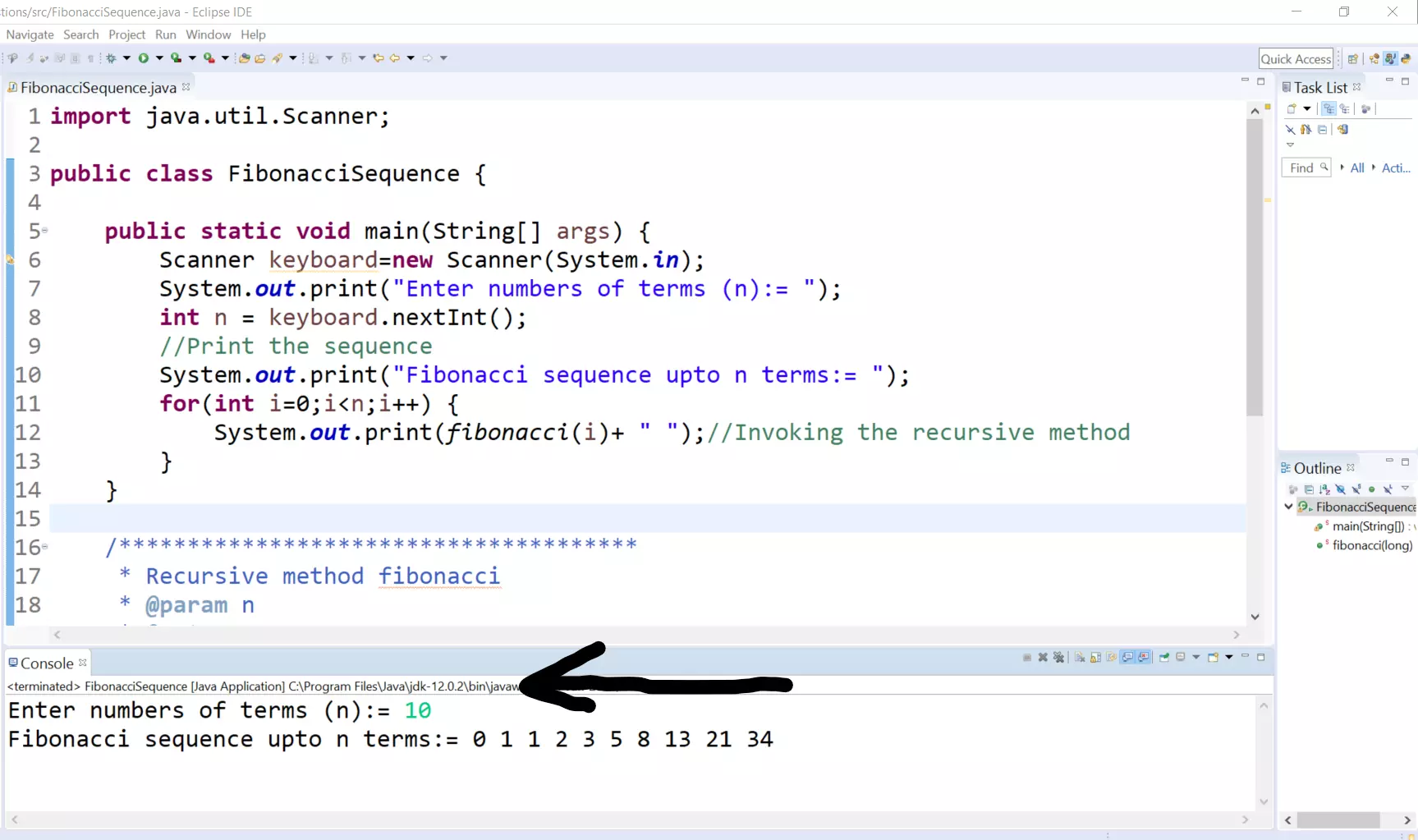

- #Python fibonacci recursive how to#
- #Python fibonacci recursive code#
- #Python fibonacci recursive series#
Generating Fibonacci Series using a FOR Loop: We will provide examples to illustrate each approach’s implementation and discuss their advantages and considerations. In this blog post, we will explore two methods for generating the Fibonacci series in Python: using a FOR loop and recursion. The Fibonacci series is often used as an exercise in programming to demonstrate different techniques and approaches.
#Python fibonacci recursive code#
Output: Code language: JSON / JSON with Comments ( json ) Summary Print(fibonacci) Code language: Python ( python ) Now, you can slice the Fibonacci sequence as follows: from fibonacci import Fibonacci

Return 1 return Fibonacci.fib(n -2) + Fibonacci.fib(n -1) Code language: Python ( python ) Return [Fibonacci.fib(k) for k in def fib (n): if n < 2:


from functools import lru_cacheĭef _getitem_ (self, index): if isinstance(index, int): Otherwise, it returns the Fibonacci number of the index. The _getitem_ method raises the Inde圎rror exception if the index is out of bounds. The _getitem_ checks if the index is integer by using the isinstance function. The _getitem_ method accepts an index which is an integer. Return Fibonacci.fib(index) Code language: Python ( python ) To calculate a Fibonacci number in Python, you define a recursive function as follows: def fib (n): if n self.n - 1: īut we’ll stick with the original Fibonacci sequence that starts at one. Some sources state that the Fibonacci sequence starts at zero, not 1 like this: 0, 1, 1, 2, 3, 5, 8, 13, 21. The following formula describes the Fibonacci sequence: f(1) = 1 In the Fibonacci sequence, each number is the sum of two numbers that precede it. The Fibonacci sequence was first discovered by Leonardo Fibonacci, who is an Italian mathematician, around A.D. If a custom sequence has the _len_ method, you can use the built-in len function to get the number of elements from the sequence. If the index is out of bounds, the _getitem_ method should raise an Inde圎rror exception.Īlso, the _getitem_ method can accept a slice object to support slicing. The range of the index should be from zero to length - 1. The _getitem_ should return an element from the sequence based on the specified index. The _getitem_ method has the index argument which is an integer. _len_ – returns the length of the sequence._getitem_ – returns an element at a given index.Technically, a custom sequence type needs to implement the following methods: Iterate over the elements of the sequence using the for loop, comprehension, etc.Use the square brackets syntax to retrieve an element by an index.If an object can fullfil the above requirements, then you can: Return an element at a given index or raise an Inde圎rror if the index is out of bounds.Technically, this requirement is not necessary. Return the number of elements of the sequence.In this tutorial, you’ll focus on defining a custom immutable sequence type.īasically, an immutable sequence type should support two main functions: Sometimes, it’s useful to implement a custom sequence type that has functions similar to the built-in sequence type like tuples and lists.Īs you’ve learned so far, a sequence can be mutable or immutable. Introduction to the custom Sequence type in Python
#Python fibonacci recursive how to#
Summary: in this tutorial, you’ll learn how to define a custom Sequence type in Python and how to implement the Fibonacci sequence using a custom Sequence type.


 0 kommentar(er)
0 kommentar(er)
